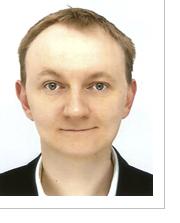An IEMN researcher is awarded an ERC Starting Grant !
The project, named UPTEG « Unconventional Principles of ThermoElectric Generation », propose to test two unorthodox ideas to turn silicon into a thermoelectric material ! Indeed, thermal to electric energy conversion via Seebeck effect remains an inefficient process especially for low temperature gradients. In addition, conventional thermoelectric materials are polluting, rare and hardly compatible with microelectronics mainstream technologies…
However, silicon, which is a key material of microelectronics thanks to its electric propoerties, has an important Seebeck coefficient but suffers from a high thermal conductivity…
The project proposed by Jean-François Robillard, associate-professor at l’ISEN (Institut Supérieur d’Electronique et du Numérique) and researcher in the IEMN Microelectronics group rely on two approaches :
Phononic Engineering Converters : This approach envisions the periodic nanopatterning of silicon at the scale of the thermal phonon mean free path. This « artificial material » will exhibit a reduced thermal conductivity, down to 100 fold or 1000 fold as compared to bulk, and preserved electric properties.
Micro-Thermionic Converters : This approach is even more unorthodox and relies on building silicon electrode pairs separated by a vacuum gap in order to nearly supress thermal losses. The electrodes are functionalized thanks to low-workfunction material coatings (alcali oxydes) which enable electronic thermo-emission.
This research could lead to a better understanding of nanoscale heat transport and enable the fabrication of efficient micro-generators. Future developments envision mechanically flexible converters able to fit any surface.
The project relies on an ambitious program from simulation and material engineering to technology. It will benefit from the outstanding micro and nanofabrication facilities and caracterisation tools of the IEMN.
The European Research Council will provide funding up to 1.5 million Euros over the 5 years of the project which will lead to the recruitment of 5 PhD students and research associates, technological developments and dissemination activities toward general public as well as the scientific community.















